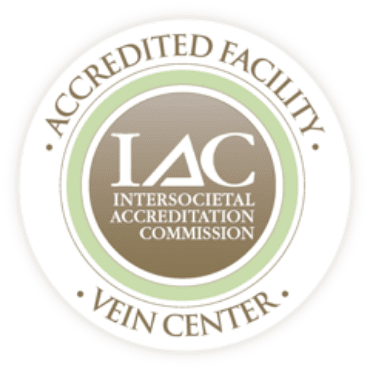Venous insufficiency, or leaky veins, is often the underlying cause of many seemingly unrelated symptoms. A thorough evaluation by a qualified vein specialist utilizing modern ultrasound techniques can expose that hidden culprit.

Tarsal tunnel syndrome is a condition characterized by pain and numbing sensations caused by abnormal pressure on a nerve in the foot. It is similar to carpal tunnel syndrome, which affects the hands and wrists.
The tarsal tunnel is made up of the anklebone on one side and a thick band of fibrous tissue called the flexor retinaculum on the other, forming a tunnel through which several tendons, the tibial nerve, artery, and veins pass through to get to the foot.
“A nerve was actually getting pressed and causing pain and numbness in each of my feet,” recounts Carl. “In order to try to relieve the pressure, they made incisions behind my ankles and performed what they call a retinaculum release, where they cut the retinaculum. During the surgery, they noted that there were huge veins inside the tunnels, but because they did not know how competent the other veins running through my ankles and feet were, they did nothing about them.”
Joseph G. Magnant, MD, FACS, is a board-certified vein doctor and renowned vascular surgeon. Dr. Magnant states that the fact that they did make the important notation of the presence of large veins in the operative note was critical to his referral for further evaluation of Carl’s venous system.
Carl says that initially the pain subsided: “I got complete relief of the symptoms for four to six months afterward, but as soon as the retinaculum grew back, the pain returned.
“As a physical therapist, I started thinking from a mechanical standpoint: There should be some way to remove the problematic veins from the tunnel. I sought the medical advice of another podiatrist, and he recommended that I see Dr. Magnant.”
Dr. Magnant’s practice, Vein Specialists with a vein clinic Fort Myers and vein clinic Bonita Springs, is 100% dedicated to the modern evaluation of leg vein disorders and vein treatment.
Venous insufficiency
After examining Carl and reading his medical history, including the op notes from the retinaculum release, Dr. Magnant recommended an ultrasound for Carl to see if there was significant venous insufficiency.
Venous insufficiency is defined as the condition in which the valves of the deep and/or superficial veins of the lower extremities no longer function properly in a one-way manner. These valves are either stuck or scarred in the open position, or are floppy and continue to open, or prolapse, beyond the closed position. This results in reflux, or backward blood flow in the veins, which produces increased hydrostatic pressure in the downstream venous system.
Dr. Magnant asked his lead vascular technologist, J.T. Jarrard, RVT, to perform an ultrasound for Carl. “The results showed that Carl had severe venous insufficiency in the great saphenous veins bilaterally. This is the superficial vein under the skin and fat from the groin to the ankle, which is sometimes used for heart bypass,” observes the doctor.
Call Or Request An Appointment
Contact us to schedule an appointment with our expert Vein Specialists team. We will evaluate your signs and symptoms, answer your questions, and create a personalized vein care treatment plan to relieve your leg pain and enhance your life.
Schedule Your Appointment Today“Typically, the normal pressure in healthy veins, veins in which the valves are closing properly, is approximately ten millimeters of mercury at the level of the ankle when a patient is standing,” notes Dr. Magnant. “Now, if the valves are leaking from the groin all the way down to the ankle, which Carl’s were, by the end of the day the pressure could have been as high as fifty or sixty millimeters of mercury in that tarsal tunnel. All of that extra pressure caused fluid to leak out of the vein into the tunnel, as well as causing small veins to start developing within the tunnel. That is why, when the hood of his retinaculum was released, the symptoms were initially relieved. The nerve wasn’t under any more compression.
“However, as scar tissue brought the retinaculum back together, the pressure returned, and because the body heals with inflammation, the pressure was likely higher than before the surgery.”
In order to confirm that the venous insufficiency identified on his ultrasound was in fact the cause of Carl’s severe pain, Dr. Magnant first prescribed that he wear compression stocking for three months to see if the numbness improved, which it did. “Based on the positive response from the hose, the results of the ultrasound, and the operative findings from the first surgery, I thought it made reasonable sense to seal the great saphenous vein in at least one leg, which I did using laser endovenous closure.”
In endovenous closure, the vein is heated and closed from the inside under local anesthesia using a catheter-based system. The laser and radiofrequency catheter systems enable vein specialists to treat patients in the office without anesthesia risks, and patients can return to normal activities almost immediately.
Defying typical symptoms
Dr. Magnant says he performed endovenous closure on the worst of Carl’s two legs: “And because of the significant improvement Carl experienced, we treated his other leg as well a few weeks later.”
“My ultrasound not only diagnosed my venous insufficiency, but it also confirmed how well the other veins in my foot and ankle were functioning,” says Carl. “I only wish we had gone this route before the initial surgery. This is dramatically better than before the surgery. I feel much better.
“As a physical therapist, though, it was interesting to me. I see many patients with venous insufficiency, but their symptoms are typically very different from mine. Usually, we see patients with swollen legs, ulcerations, bulging veins, or skin discoloration.
“I had none of those, so when Dr. Magnant diagnosed venous insufficiency, I thought, Okay, this is going to take some convincing. Then he showed me the ultrasound studies and explained the dynamics of what was happening. Once I understood that, then it made a lot of sense.”
“There are many manifestations of venous insufficiency,”elaborates Dr. Magnant. “Some of our patients experience restless legs or extreme urination frequency at night. Others have ankles so swollen that the calf and ankle appear to have merged as one; my patients often describe them as Grandma’s ankles, piano legs, stovepipe legs, or cankles.
“We recommend that, before patients begin taking diuretics, have a retinaculum release for tarsal tunnel syndrome, go through a urology work up, or are put on medications for restless leg syndrome, they seek an evaluation by a qualified vein specialist to verify there is not significant underlying venous insufficiency which may be causing or contributing to the problem. It’s conservative, noninvasive, accurate, and easy to diagnose.”
Source: FHCN– Kris Kline
Request an Appointment
Please take a moment and fill out your request below and one of our staff members will be in contact within 24-48 business hours. If this is an emergency, call 911 immediately. If this is a non-emergent concern, please call the office Monday-Friday between 8am – 5pm at: 239-694-8346

